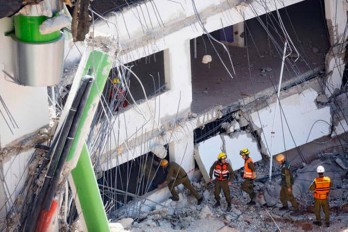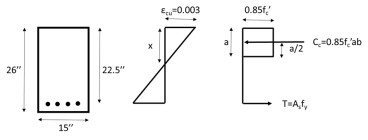Underground structures
Underground structures refer to constructions that are built beneath the Earth's surface, either partially or entirely. These structures serve a wide range of purposes, from transportation and utilities to storage, shelter, and research. Designing and constructing underground structures requires careful consideration of factors such as geology, engineering, safety, and environmental impact. Tunnels, subway and metro systems, underground parking garages, underground storage and transportation facilities are some examples of underground structures. As with any construction project, it's important to consider environmental impact, long-term maintenance, and potential challenges related to groundwater, soil stability, and other subsurface conditions.
Want to read more like this?

An under construction underground parking structure collapses in Tel Aviv: 2 people dead
Sep, 14, 2016 | NewsOn Monday, 5th of September 2016, a structure collapsed causing the death of two people. The acciden...

Design & Construction of Tunnel and Underground Station at Krishna Park of Delhi Metro Phase IV
Jan, 02, 2023 | NewsThe Krishna Park project, located in a densely populated urban area, is part of the Delhi Metro Pha...
Soil structures
Sep, 07, 2023 | EducationSoil structures refer to constructions that involve the use of soil as a fundamental building mate...

Exploring Crossrail
May, 11, 2015 | NewsCrossrail is one of the biggest projects in Europe, which is on its way since the 15th May, 2009. At...
Structural stability
Sep, 16, 2022 | EducationStructural stability is the ability of a structure to maintain its shape and resist deformation or...
Temporary structures
Sep, 07, 2023 | EducationTemporary structures are constructions designed and erected for short-term use, often to serve a s...
Structural loads
Sep, 07, 2023 | EducationStructural loads refer to the forces, pressures, and other external actions that act upon a struct...
Underwater structures
Sep, 07, 2023 | EducationUnderwater structures are constructions that are designed, built, and operate in underwater environ...
Continuous structures
Sep, 07, 2023 | EducationContinuous structures are also known as continuous systems and refer to a type of structural arran...
Trending

Diaphragms

Nominal flexural strength of a reinforced concrete beam

Calculate the Maximum Shear Stress

Overhanging beam: shear force and bending moment calculation

Truss deflection using the unit load method

Method of sections

Calculation Example – Beam with inner hinge (Part A). Find the Reactions

